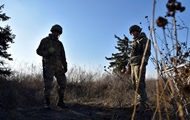From now on, the Earth will gradually move away in its elliptical orbit around the Sun until July 4, remind the representatives of the Astronomical Institute of the Academy of Sciences of the Czech Republic.
–
Milder winters and colder summers
Why is it that we have a winter season in the northern hemisphere, even though our world is closest to its star overall?
–
“The cause is the axis of rotation of our planet, which is inclined at an angle of 23.5 degrees to the plane of the Earth’s orbit around the Sun. At a time when it is cold in our country, the Earth’s northern hemisphere is deviating from the Sun, so that about three times less solar energy falls on a unit area than in the summer (when the Northern Hemisphere is inclined towards the Sun), ”explains the Astronomical Institute.
–
The fact that the Sun is above the horizon for a much shorter time also helps to cool down. In the southern hemisphere, the situation is the opposite.
–
“Nevertheless, a slight approach and retraction of the Earth in orbit around the Sun is important: in the northern hemisphere, winters are generally milder and summers are colder than in the southern hemisphere,” said domestic astronomers.
–
As the well-known American astrophysicist Neil deGrasse Tyson commented, the Earth as such now receives about six percent more energy from the Sun than in July, but as a result it is “erased” by currently moving faster in its orbit. And with that tilt of the earth’s axis.
–
The weather was bad for the quadrantids
At the same time, the meteor swarm of the Quadrantida peaked on Tuesday night, as our planet flies through a stream of particles once in the distant past released from the extinct comet 2003 EH1. Up to several dozen shooting stars could shine in the morning sky.
–
Maximum meteor swarm Kvadrantid on Oravská Lesná in 2020.
Photo: Petr Horálek
“From this year, resp. Unfortunately, we do not have any suitable photos available last night, ”Pavel Suchan from the Czech Astronomical Society and the above-mentioned Institute of the Academy of Sciences of the Czech Republic answered the question.
–
“It was cloudy and raining,” he added.
–
Quasi-conjunctions of Mercury and Saturn
Nevertheless, the January sky can still prepare something for us. E.g. in the evening of early January, three planets shine above the southwestern horizon: Jupiter, Saturn and Mercury. While we have been able to watch Jupiter and Saturn in the evening sky for many months, Mercury is “visiting” here.
–
“And he will demonstrate an interesting phenomenon, the so-called quasi-junction with Saturn,” said astronomer popularizer Jan Veselý from the Planetum organization (Observatory and Planetarium of the Capital City of Prague) on the website of the Czech Astronomical Society.
–
According to him, the word conjunction refers to a situation where two celestial bodies find themselves close to each other. The original meaning was astrological, and conjunction meant “joining the forces” of the planets. In practice, the moment of conjunction is calculated according to when both bodies reach the same length coordinate.
–
Mercury and Saturn in the evening sky from January 3 to 17. The positions of Mercury are marked on the horizon every two days, the position of Saturn and the stars is marked for clarity only for January 13, when quasi-junction occurs and when the planets are angularly closest to each other.
Photo: Jan Veselý using the Stellarium program
“Mercury will draw a beautiful arc over the horizon, but it will not reach the same ecliptic length as Saturn. They just approach him and move away again. Today we call this situation a quasi-function. At the smallest angular distance, Mercury approaches Saturn on January 13 at around 11 p.m. We will find it 3.43 ° west of Saturn, “Vesely described.
–
At the end of the moon, Venus also appears in the morning sky, which underwent a lower conjunction with the Sun on January 9. Mars is with her. The moon will approach them on January 29 and then in the following months.
–
We offer an overview of the most interesting celestial phenomena this year at the link below:
—


